- Profile
- Images
Location: Germany, Ireland, America
Surnames/tags: ireland, america German_Roots south_carolina
To join the Palatine Migration Project, see the main project page
The Palatinate is a distinct region within Germany. But the upheavals at the end of the 17th century that continued into the 18th century were not confined exclusively to the borders of the Palatinate.
Most historians consider all Germans (broadly defined to include German-speaking people) who emigrated from the beginning of the 18th century til the outbreak of the American Revolution to be part of the Palatine Migration.

|
| Regions of Germany |
The definition of Palatine is listed to be a person who originally lived near the Rhine River in the Palatinate of southwestern Germany.
Many wars in the Middle Rhine region of the Holy Roman Empire resulted in the French of long ago invading Germany. These invasions contributed to destruction of the countryside, thus less farming, and famine, as well as military requisitions reduced the region to being unable to support its citizens.
The French troops of King Louis XIV had sacked the cities, burned houses, stolen property, killed many people, and generally destroyed the farms.. The farmers in the locale were forced to plow under their fields, as all were ruined. In 1693 the looting and burning of castles and villages occurred.. That was when the great castle of Heidelberg was reduced to ruins.
The region suffered perhaps more that most: Lower or Rhenish Palatinate which was also called the Pfalz was located in southwest Germany east of Luxembourg along both sides of the Middle Rhine River. The Pfalz included the present German States of Mainz, Treves, Lorraine, Alsace, Baden and Wurtemberg. Heidelberg was its capital.[1] Example:Heidelberg Castle, 1670, Schloss_von_Gerrit_Berckheyde Germany

|
| Heidelberg Castle, 1670, Schloss_von_Gerrit_Berckheyde |
In the early 1700's many German Palatine families re-settled out of Germany. Wars in Europe had reduced its ability to sufficiently provide for its families. These resilient people adjusted to new locales, and prospered where they could. They were hard workers.

|
| Germany region. |
- 1702-1727 Was an Era of early German emigration to England..It was very cold beginning in October, of 1708. The farmers had plowed under their fields. No more could be done. Even the fruit trees were killed. They began the migration.

|
| Queen Ann, England. |
Queen Anne and the English government offered a safe haven in England and sustenance for the Palatines until they could get jobs, etc.
The Seine River had frozen over. There were some places which would support the carts of belongings. The people began to leave. Their path was northward then over to Holland…Then by shipload over to England. When the Palatines reached London there are reports that the numbers arriving in London may have reached 2000 to 13,500.
The Palatines began to cross from Holland to England in large numbers.. By Oct, 1709 there were 13,500 in or more with no money, or houses. They were residing in tents of sorts or lean-to's in London, near the Surrey side of the Thames River, Blackheath. [2]
Soon The Whigs in England objected to these expatriates in 1708-09. The Palatines were supposed to pay a fee in order to become naturalized.. England had already accepted many French Huguenots. The Crown discovered it could not support the Palatines or pay their fee for naturalization.. By Jan 11, 1710, the Board of Trade in England received Sunderland's letter England. England resettled them in:.....
By 1710 England resettled (533 families) 3,073 Palatines in Ireland. They became known as IRISH PALATINES [2] had been relocated to rural Ireland, with a roughly equivalent number being transported to New York. Two Counties in Ireland were the prevalent places where the Palatines settled. Both were agriculture areas. They were: predominantly in Wexford and Limerick counties, Ireland.
- Irish Palatines [2]
- Wexford County Palatines
- Limerick county Palatines- these still speak the German language
- Some returned, some returned to England. 1200 remained in Ireland
SEE: Irish Palatine Association
WEXFORD County
WEXFORD County: They settled here in the agriculture area helping with farming.

|
| Wexford County, Ireland. |
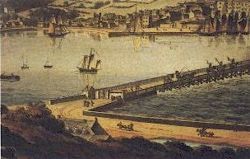
|
| Wexford and Harbor in 1800. |

|
| . |
Limerick County
LIMERICK County, Ireland tenants in the agriculture areas.. Some returned to England. 1200 remained. Majority lived in Limerick co, Ireland.
- County Limerick
- County Wexford
- They farmed hemp,
SEE: Irish Palatine Association

|
| Limerick County, Ireland |

|
| map Rathkeale co Limerick Ireland. |
The Largest remaining group of Palatine residents live near Rathkeale, co Limerick, Ireland [3]

|
America

|
| 3000 Palatines to America (New York) |
Next England Resettled people in the new colony, America.
- 1710 -3000 Palatines in 10 ships to New York …
- Robert Hunter who had been captured by French, recovered, and was over in England, sailed with the Palatines to New York... He became Governor of New York.

|
| Hunter. |
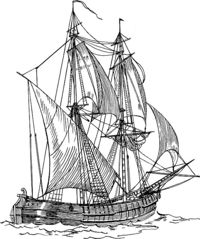
|
| Departure to America . |

|
| Palatines to America Genealogy. |

|
| Immigration. |
Ten ships loaded with Palatines, left England for America to add 3300 Palatine immigrants to its settlers.
- New York Palatines- Example - Example Germantown and Saugerties, New York
- Pennsylvania Palatines See: Project: William Penn
- Carolina Palatines (600-800)

|
| American colonies. |

|
Their goal was New York.

|
- In America the Palatines worked off their passage.
- The 3000 Palatines are also listed as 350 families
Robert Livingston had a patent 160,000 acres (650 km²/ 250 sq mi) along the Hudson River south of Albany. This was named Livingston Manor.. Later its locations in areas would become known as Columbia and Dutchess counties. (After the American Revolution)
It is reported that Livingston offered land to Queen Anne's government of England. This could be used for work camps for emigrants, such as the German Palatines.

|
| Livingston. |
The location was both sides of the Hudson River to Queen Anne's government of England to be used temporarily as work camps for settlers and German Palatine refugees,. The objective was to harvest the trees, produce lumber for cabins, timber for masts and turpentine for the English navy.
After these settlers had worked in the camps to pay off their passage, they could be granted land in the Mohawk and Schoharie.
- Livingston himself gained a profit of the sale of supplies to the English navy and sale of supplies to the work camps.. All was paid by the English colonial government.[4]

|
| NY Harbor. |
Examples of settlements:
- Germantown
- Saugerties New York
- 850 families settled in the Hudson River Valley, primarily in what are now Germantown and Saugerties, New York.[5]
:SEE Also: [William Penn Project]
Palatines in the Carolinas
600-800 Palatines were reported to have been sent to the Carolinas.
- this is an area for you to investigate if interested.

|
| Here's an image. |
From New York, Palatines sent to North Carolina
and South Carolina

|
| ' |
Sources:
- ↑ The Palatines, UELAC Research Paper, 2006.
- ↑ 2.0 2.1 2.2 Palatine Immigration to America, Daniel Rupp, 1876.
- ↑ Irish Palatine Landmarks.
- ↑ Bielinski, Stefan. "Robert Livingston", New York State Museum
- ↑ Wikipedia entry for German Palatines.
- Login to request to the join the Trusted List so that you can edit and add images.
- Private Messages: Contact the Profile Managers privately: Palatine Migration WikiTree, Ellen Smith, Mary Richardson, Jacqueline Clark, and Terry Wright. (Best when privacy is an issue.)
- Public Comments: Login to post. (Best for messages specifically directed to those editing this profile. Limit 20 per day.)
- Public Q&A: These will appear above and in the Genealogist-to-Genealogist (G2G) Forum. (Best for anything directed to the wider genealogy community.)

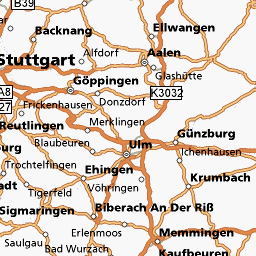
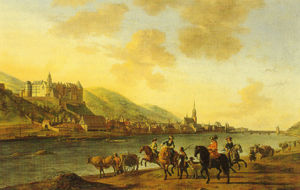
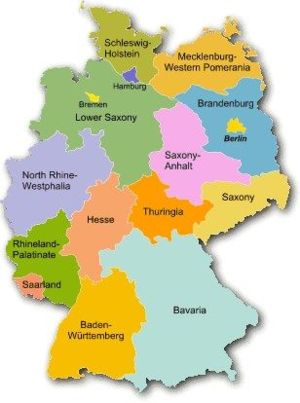
I only recently found the Palatine Migration project and am very interested in available information that may assist my research into the Benner/Bender branch of my family.
I'm unsure if this if common knowledge, but the Adriance Library in Poughkeepsie NY has a very large room dedicated to genealogical research. While working at that resource site, I discovered various reference texts listed below, often available via Googlebooks or other electronic viewing websites (e.g. archive.org), that may prove helpful to others? Short notes regarding information specific to persons in my Benner/Bender branch are provided after each text reference.
Jones Jr., Henry Z., The Palatines Families of New York (1985) - two volumes (hard copies at Adriance Library, Poughkeepsie NY)
Morse, Howard H., Historical Old Rhinebeck, Echoes of Two Centuries (1908) - page 48 discusses the Palatines of 1710. It notes Old Ryn Beck (Rhinebeck) and lists families along the King's Highway in the Beekman Patent including "Bender"
Smith, Edward M., Documentary History of Rhinebeck (1881) - page 45 - Fallentyne Bender is listed as a in 1723 tax assessment for the North Ward of Dutchess County
Smith, James H., History of Duchess County, New York : with illustrations and biographical sketches of some of its prominent men and pioneers (1882) - Benner Farm noted on page 180 with referenced location being south of road to Barrytown, west of the Post Road.
Clearwater, Alphonso T., The History of Ulster County (1907) - Valentyn Benner/Bender is a described as one of the 1714-1715 "early freeholders and inhabitants" of Kingston on page 65.
Hoes, Roswell Randall, Baptisms and Marriages Old Dutch Church Kingston, Ulster County NY for one hundred and fifty years from their commencement in 1660 by Reformed Protestant Dutch Church of Kingston, New York; , 1850-1921 (1891) - page 579 lists marriage of Johannes Bender to Magdalena Streid on May 27, 1740 in Rhinebeck (Reinbeck) by Domine Mancuis.
Best wishes of good health during these difficult times.
- Jeff
I have removed that map. We still have lots of maps here!
Looking further, I see that the map Palatines_Images-1.png captioned "Regions of Palatines" has numbers to indicate subdivisions of Rheinland-Pfalz, but without a key to the numbers, it's not useful (and it's a modern map that won't help with history). https://www.wikitree.com/photo/png/Palatines_Images-1 indicates that the image is "Rhineland_palatinate families wikipedia, commons, map". I found it at https://commons.wikimedia.org/wiki/File:Rhineland_p_map_(1).png but there's no key -- and discussion at https://en.wikipedia.org/wiki/Talk:Rhineland-Palatinate indicates problems with the map. Given all that, let's not use this map, OK?!
I mistakenly took that for a map of Ireland. It is about the same shape and a good approximation of the location of county Limerick!
Not sure that another map is necessary at top of the page, so for now I have just deleted it.
I've been talking with the project coordinator, Dave, about some of the set up for the project, and I think for continuity, we might consider renaming this page to Palatine Migration History or something along those lines, so it's clear that is part of the Palatine Migration Project, not a separate project. It's a little misleading. I can help merge the page into the different name, if you need it.